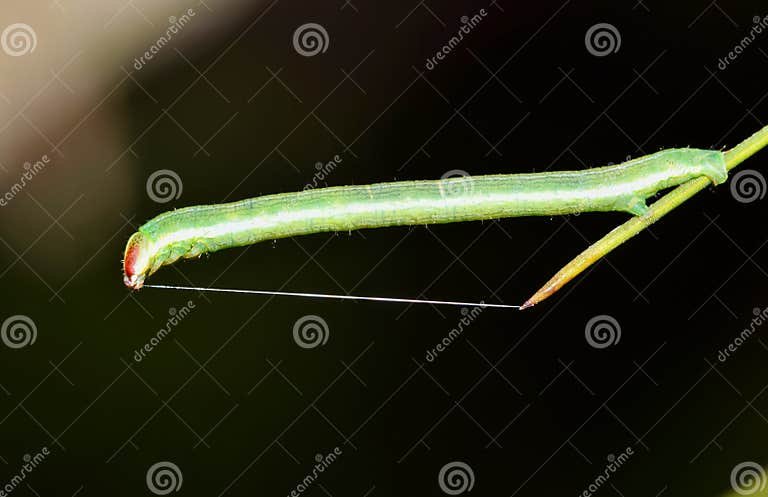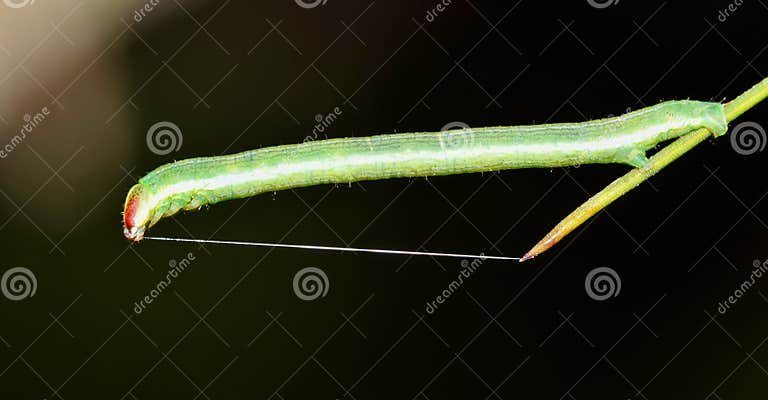
Instead of using legs like many other insects, inchworms employ a different strategy, much like a tightrope walker balancing on a thin wire. By creating silk threads, they can effectively “hang on” while inching along, which helps them avoid predators and find food. So, let’s dive deeper into the world of inchworms and discover just how they use these silk threads for mobility.
What Are Inchworms?
Inchworms are the larval stage of a moth, specifically belonging to the family Geometridae. You might recognize them by their unique way of moving. They have a distinct “looping” behavior, which is why many people call them **measuring worms**. What’s fascinating is that they can measure their movement in a way, inching forward by contracting and stretching their bodies.
You could compare them to a little caterpillar on a mission, but instead of simply crawling, inchworms have a clever trick up their sleeves—or rather, their bodies. If you spot one outdoors, you might notice it blending in with its surroundings. Their green and brown coloration helps them remain undetected by predators while they search for leaves to munch on.
These miniature creatures typically enjoy a diet of leaves from trees or shrubs. They play a crucial role in the ecosystem, serving as food for birds, small mammals, and other predators. But how do they manage to stay safe while moving from one leaf to another? That’s where their silk comes into play.
The Role of Silk Threads in Mobility
Silk threads are a vital part of the inchworm’s mobility strategy. Think of it like a safety harness for a rock climber. When inchworms want to travel from point A to point B, they produce silk to anchor themselves to a branch or leaf. This silk acts as a lifeline, giving them the ability to explore without the constant fear of falling to the ground.
The **silk** is produced from glands in their mouths, which allow them to create a strong yet lightweight thread. This means they can efficiently attach to surfaces as they move. You might picture it like a tightrope walker who uses a safety net; inchworms can inch along with confidence, knowing they have a secure line to catch them if they slip.
Interestingly, the silk also helps prevent them from getting lost in the vast world they inhabit. By leaving a thread behind, they can retrace their steps if they need to head back. It’s a clever navigation system that keeps them safe while they scavenge for food or escape predators.
How Inchworms Create Silk
You might be wondering how exactly inchworms create silk. The process is pretty remarkable and showcases nature’s ingenuity. When an inchworm decides to make a silk thread, it starts by exuding a liquid from its mouth. This liquid quickly hardens as it comes into contact with the air, transforming it into a durable silk strand.
Just like how you might pull and stretch dough when baking, inchworms can manipulate this silk thread to create varying lengths and strengths. Sometimes they’ll pull on it while moving to adjust their position or create a tighter grip as they navigate tricky terrain.
The silk is also incredibly fine, comparable to the thickness of a human hair, but it’s strong enough to hold the weight of the inchworm. This allows them to balance and prevent falls while they swing from leaf to leaf. Honestly, it’s fascinating how something so small can have such a big impact on their survival.
Predators and the Benefits of Using Silk
Inchworms have many predators, including birds and wasps, which makes their survival even trickier. By using silk threads to help them move, they add an extra layer of protection. When they feel threatened, inchworms can quickly drop down on their silk threads, hanging out of sight. Think of it like a cartoon character dropping out of view just in time to avoid being caught.
The silk not only helps them evade predators but also acts as a form of camouflage. When they hang from a branch, they often sway gently in the breeze, which can help them blend into their background. This trick can confuse hungry birds looking for a quick snack, buying the inchworm precious time to escape.
Additionally, the silk can deter some predators. Certain animals may find it unappealing or difficult to grasp a dangling inchworm, giving the inchworm a chance to pull itself up and escape. This clever use of silk is just one example of how nature equips creatures with amazing tools for survival.
Life Cycle and Mobility Needs
Inchworms go through several stages of life before becoming adult moths. As juveniles, their primary focus is to eat and grow, which requires a lot of mobility. The silk threads play a critical role during this phase, allowing them to explore their environment and find enough food to sustain their growth.
When inchworms are ready to pupate, they often use silk to create a protective cocoon. Imagine a cozy blanket made just for them! This silk not only keeps them safe during their metamorphosis but also helps anchor them to a safe spot on a branch or leaf, preventing them from being dislodged by wind or rain.
Once they become adult moths, they no longer use silk threads for mobility. Instead, they rely on their wings to fly and explore. But the silk thread they used as a caterpillar serves as a reminder of their unique journey, showing how they transformed from a tiny inchworm to a soaring moth.
Inchworms are truly remarkable little creatures, and their ability to use silk threads for mobility is just one of the many amazing aspects of their biology. From their unique movement style to the clever way they use silk for safety and navigation, inchworms remind us just how creative nature can be.
Next time you spot an inchworm inching along, take a moment to appreciate the tiny acrobat at work—swinging and hanging on to life with a delicate silk thread. It’s a small reminder of how interconnected and ingenious life can be in even the tiniest forms. So, whether you’re out in the garden or simply admiring nature’s wonders, let the inchworm inspire you with its incredible adaptations!

